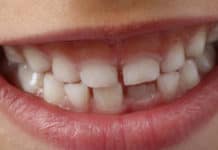T
The program takes care of the patients on whatever stage of sickness they are in. When BP found out that adults contaminate the children with the disease and the government did not have any program for children, BP started its own program to save its beneficiaries from the illness.
For some years, the health status of the community has remarkably improved. As a result, BP was able to develop a rapport with the government health centers in the nearby communities and tried to help arrived to the inmost members of the community. In addition, BP started to receive vaccines from the government health centers for its beneficiaries. BP has established a linkage with some hospitals, laboratories and other agencies to give better quality care and concrete help to the beneficiaries.
From 1986 to 1992, a French NGO, Interaide, with its expertise and resources, brought about the professionalization of the program, as well as the possibility to reach out to as many patients as possible in the community. The Tuberculosis Management is handled by a volunteer Pulmonologist Doctor for adults and a volunteer Pediatric Pulmonologist Doctor for children from Makati Medical Center with which the BP had signed a Memorandum of Agreement for the fellowship of Pediatricians in the Primary Health Care. As a result, despite its limited resources, BP was able to treat hundreds of patients, many of whom were healed and resumed their normal activities.
Short term goal: to cure the patient, not only for himself, but also for the safety of his family, relatives and neighbor.
Long term goal: to eradicate tuberculosis in our areas of concern.
Patient priority
- Adults
- Contagious – patients with sputum smear (+) positive on direct microscopic examination.
- Symptomatic – patients who have negative results on the sputum examination, but have positive results on the x-ray.
- Children
- Positive X-ray results
- Positive PPD results
- Mode of detection – patients enter the program thru case finding, medical, referrals, walk-in and check-up of contacts.Laboratory – before, during and after treatment: sputum examination, chest x-ray, PPD testing for children.Treatment
The duration of the treatment is generally six (6) months except when there is the necessity to extend for another three (3) months or so upon evaluation, depending on the condition of the patient, or in case of resistance.
Stage of treatment / Medicines being used
Intensive phase- First two (2) months of treatment: Rifampicin, Ethambutol with INH.
Maintenance Phase – Last four (4) months of treatment: Rifampicin, Ethambutol with INH.
Monitoring
Regular home visitations are necessary and very important in the follow-up of patients during treatment and occasionally also after treatment. When cured, the patients enter the rehabilitation phase where they are referred to the livelihood program for counseling and empowerment.




